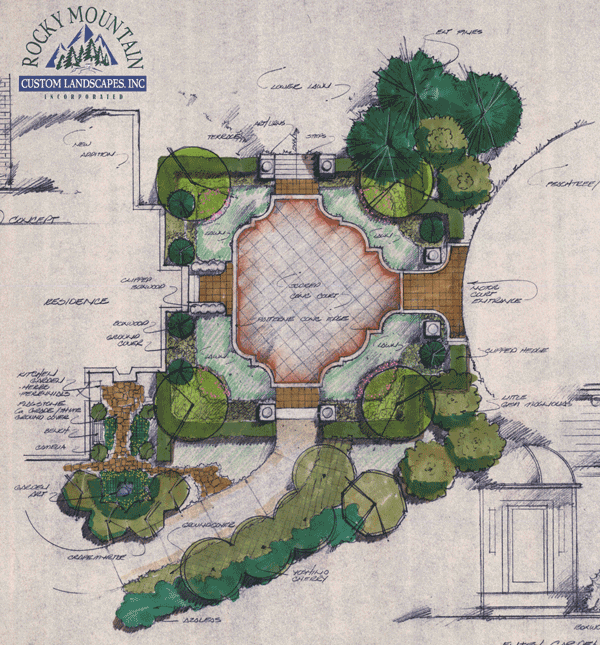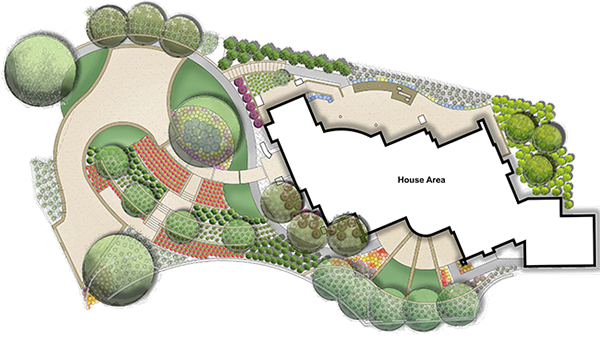Ogden Edge Design Company: Changing Outdoor Spaces with Artistic Landscapes
Wiki Article
Transforming Your Landscape With Sustainable Style
By integrating eco-friendly design aspects, picking indigenous plants, and applying water conservation methods, one can develop a greener and more sustainable landscape. In this discussion, we will discover the various advantages of lasting landscape design, dive right into the methods to integrate green design elements, and share suggestions and methods for maintaining a lasting garden. If you're looking to transform your landscape right into a lasting sanctuary, keep reviewing to discover the keys to achieving a greener and more environmentally friendly outdoor room.Benefits of Sustainable Landscaping
Lasting landscape design supplies various advantages for both the setting and property proprietors. By integrating drought-tolerant plants and reliable watering systems, sustainable landscape design minimizes water use dramatically.One more advantage of sustainable landscape design is the decrease of chemical usage. Conventional landscape design often depends on chemicals and plant foods, which can damage the setting and human health. In comparison, lasting landscape design techniques focus on all-natural bug control approaches and organic plant foods, minimizing the demand for unsafe chemicals.

Finally, lasting landscaping can raise residential property value. A well-designed sustainable landscape not only improves the visual appeal of a residential property but likewise demonstrates a commitment to ecological duty. This can bring in possible purchasers and occupants who value lasting practices, causing higher building need and value.
Integrating Eco-Friendly Layout Components
By integrating eco-friendly design aspects, building owners can enhance the sustainability of their landscapes while minimizing their environmental effect. Green layout elements concentrate on using sources successfully, decreasing waste, and promoting biodiversity. One crucial element is water conservation. Installing rainwater harvesting systems and using drip irrigation can substantially minimize water usage. Indigenous plants must likewise be focused on in landscape style, as they are adapted to the regional climate and require less water and maintenance. Additionally, including sustainable products is essential. Utilizing recycled or reclaimed materials for hardscaping not only reduces waste but also includes an unique aesthetic to the landscape. Another important element is power performance. Mounting solar-powered lights or making use of low-energy LED lights can lessen energy consumption. Creating environment for wildlife is an essential green style element (Ogden Edge Design Company). By consisting of attributes such as bird feeders, insect hotels, and native growings, homeowner can attract and sustain a varied range of wild animals. Incorporating these eco-friendly layout elements not just benefits the setting however likewise produces a sustainable and gorgeous landscape for building proprietors to appreciate.Picking Native Plants for a Lasting Yard
When designing a sustainable garden, one vital aspect to consider is the choice of indigenous plants. Indigenous plants are those that normally take place in a specific region or environment and have actually adjusted to the neighborhood environment, dirt conditions, and wild animals. By choosing native plants for your garden, you can develop a sustainable and low-maintenance landscape that profits both the atmosphere and the regional ecological community.Indigenous plants have actually evolved over time to be well-suited to the local conditions, making them more resilient and less depending on chemicals, plant foods, and extreme watering. They also provide habitat and food sources for neighborhood wildlife, such as birds, , and butterflies, which are important for pollination and biodiversity.
When choosing native plants for your garden, it is very important to think about variables such as sunshine needs, dirt kind, and water requirements. Investigating and speaking with with local nurseries or horticulture specialists can assist you identify the native plants that are best matched for your certain place.
Along with their ecological advantages, native plants can also include appeal and diversity to your garden. They can be found in a variety of colors, forms, and sizes, wikipedia reference permitting you to develop a visually appealing and special landscape.
Water Conservation Strategies for a Greener Landscape
To produce a more environmentally-friendly and lasting garden, implementing water preservation techniques is crucial for a greener landscape. Water is a valuable resource, and as our populace expands and environment modification escalates, it ends up being significantly crucial to preserve water in our landscapes.One efficient water conservation strategy is utilizing compost. Using a layer of compost around plants and in yard beds aids to retain wetness in the dirt, decreasing the demand for frequent watering. Compost also assists to subdue weed growth, which can contend with plants for water.
An additional technique is using drip irrigation systems. Unlike standard automatic sprinkler that spray water into the air, drip watering delivers water directly to the roots of plants, decreasing evaporation and water waste. Leak watering systems can be quickly set up and adjusted to satisfy the details water requirements of various plants.
Rainwater harvesting is one more useful technique for water preservation. By accumulating rainwater from downspouts, seamless gutters, and roofing systems, you can keep it in barrels or containers for later usage in sprinkling your yard. This not only minimizes the need for municipal water yet additionally ensures that rainwater, a natural and free resource, is placed to great use.
Finally, proper upkeep of irrigation systems is vital for water conservation (Ogden Edge Design Company). On a regular basis evaluating and fixing any kind of leakages or busted lawn sprinkler heads can avoid water loss and make certain great site that water is being used successfully
Preserving a Lasting Yard: Tips and Tricks
Implementing correct maintenance practices is crucial for preserving a sustainable garden. By following a few pointers and techniques, you can make certain that your garden stays healthy, lively, and eco-friendly.One of the most vital elements of preserving a lasting garden is correct watering. By sprinkling your plants deeply and less often, you can encourage deep root growth and decrease water waste. Furthermore, making use of a drip watering system or rain harvesting can additionally conserve water resources.
Regular weeding is another important upkeep practice. Weeds contend with your plants for nutrients and water, so it is very important to eliminate them promptly. Think about using natural mulch to reduce weed development and retain wetness in the soil.
Composting is an outstanding way to recycle natural waste and enrich your yard dirt. By developing a compost heap, you can turn kitchen area scraps, backyard trimmings, and various other natural products right into nutrient-rich garden compost. This will not just minimize waste yet also enhance soil health and fertility.

Normal trimming and proper plant care are likewise important for keeping a lasting garden. Pruning aids advertise healthy growth, improve air flow, and avoid the spread of diseases. Additionally, providing appropriate sunlight, dirt nutrients, and security from severe climate condition will assist your plants thrive.
Final Thought
By incorporating environmentally friendly layout elements and picking indigenous plants, people can develop a sustainable garden that supports neighborhood biodiversity and needs less maintenance. Generally, maintaining a lasting garden needs cautious preparation and continuous dedication, however the incentives are well worth the initiative.By incorporating environmentally friendly style aspects, choosing native plants, and implementing water conservation strategies, one can create a greener and a lot more sustainable landscape. In this conversation, we will discover the numerous advantages of sustainable landscaping, dig right into the ways to integrate go to these guys eco-friendly design aspects, and share ideas and methods for maintaining a sustainable yard. By including drought-tolerant plants and effective irrigation systems, sustainable landscaping decreases water usage significantly. By choosing indigenous plants for your yard, you can create a lasting and low-maintenance landscape that benefits both the setting and the regional ecosystem.
By including eco-friendly design elements and choosing indigenous plants, people can produce a lasting garden that sustains neighborhood biodiversity and needs less upkeep.
Report this wiki page